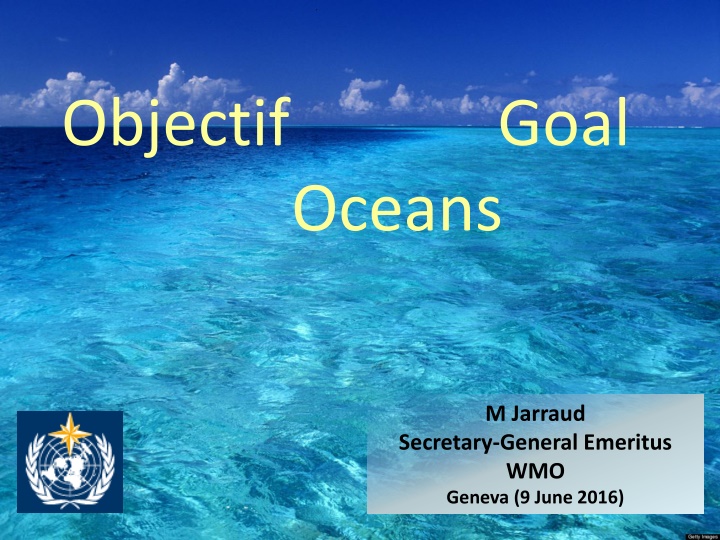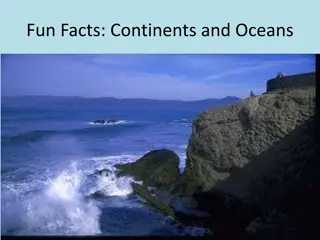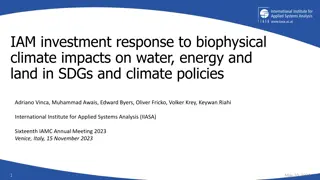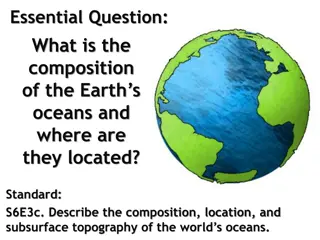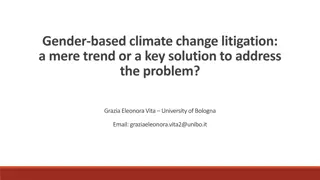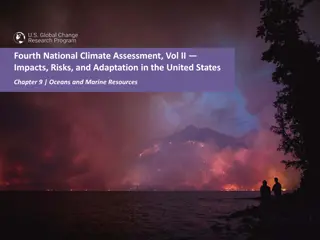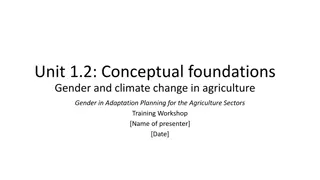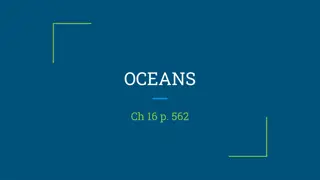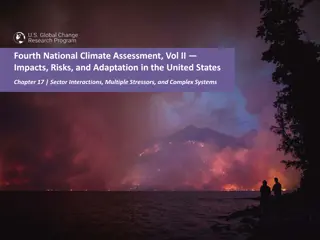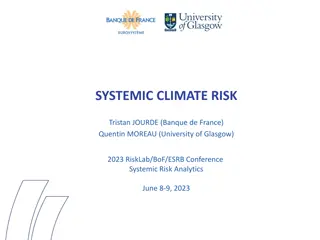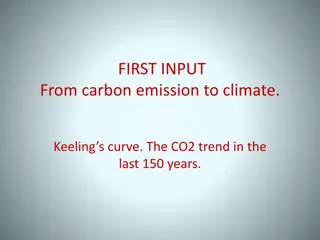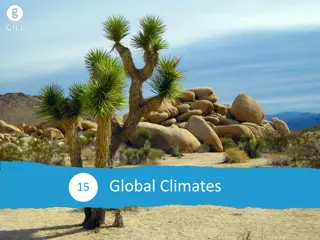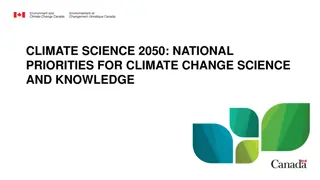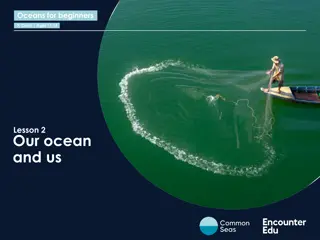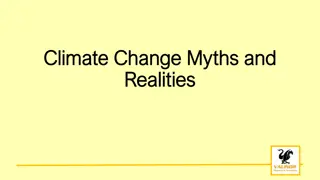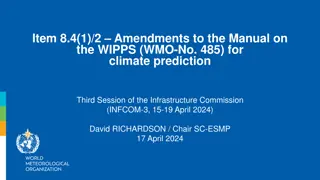Exploring Complex Interactions of Oceans and Climate
Oceans cover over 70% of our planet and play a crucial role in the climate system through interactions with the atmosphere, land, and human activities. The long timescales associated with oceans present significant challenges and opportunities for understanding their role in climate change. This content delves into topics such as El Niño, sustainable development, ocean observations, global ocean heat content, sea level rise, and Arctic sea ice trends.
Download Presentation

Please find below an Image/Link to download the presentation.
The content on the website is provided AS IS for your information and personal use only. It may not be sold, licensed, or shared on other websites without obtaining consent from the author.If you encounter any issues during the download, it is possible that the publisher has removed the file from their server.
You are allowed to download the files provided on this website for personal or commercial use, subject to the condition that they are used lawfully. All files are the property of their respective owners.
The content on the website is provided AS IS for your information and personal use only. It may not be sold, licensed, or shared on other websites without obtaining consent from the author.
E N D
Presentation Transcript
Objectif Goal Oceans M Jarraud Secretary-General Emeritus WMO Geneva (9 June 2016)
Oceans and Climate Oceans cover over 70% of planet largest component of climate system Complex interactions between oceans, atmosphere, land and human activities Long time sacles associated with oceans Significant progress in our knowledge of oceans, but Important remaining questions! http://calendar.wincalendar.net/img/holiday/World-Oceans-Day.png
El Nio and Southern Oscillation: ENSO El Ni o: Ocean component of ENSO El Ni o Southern Oscillation: atmospheric component of ENSO
Global ocean heat content 1955-2015 Oceans absorb about 93% of extra heat Atmosphere 2.3% Continents 2.1% Glaciers and ice caps 0.9% Arctic sea ice 0.8% Greenland ice sheet 0.2% Antarctic ice sheet 0.2%
Global ocean heat content 1955-2015 0-2000 m global ocean heat content 0-700 m global ocean heat content No climate hiatus No Climate pause !
Sea level rise (1) 1901-1990: 1.9 mm/yr 1990-2010: 3.0 mm/yr 1992-2016: 3.3 mm/yr Causes: Impacts: thermal expansion Melting of land glaciers Others Coastal erosion Intrusion of salted water Impact of storm surges and tsunamis
Sea level rise (2) Trend 1993 2013
Arctic sea ice Trend 1979 2015 -13.4% per decade Yellow line : mean extension 1981-2010 Arctic ice extent (Sept 2015)
Oceans acidification and CO2 absorption Oceans have absorbed about 25% of all anthropogenic CO2 Acidification: about 26% since pre-industrial time Rate unprecedented in last 300 million years Acidification will continue for centuries, even with z ro CO2 emissions Acidification reduces capacity of oceans to absorb CO2 pH drop of 0.1 unit since pre-industrial times
From knowledge to action Getting the information across in an authoritative, but understandable way Strengthen cross-disciplinary cooperation Better integration of Oceans dimension in various international agreements (Agenda 2030, Sendai framework, COP21 agreement, ) Revisit governance and coordination mechanisms (e.g UN-Ocean) We now have the knowledge There is urgency to act
